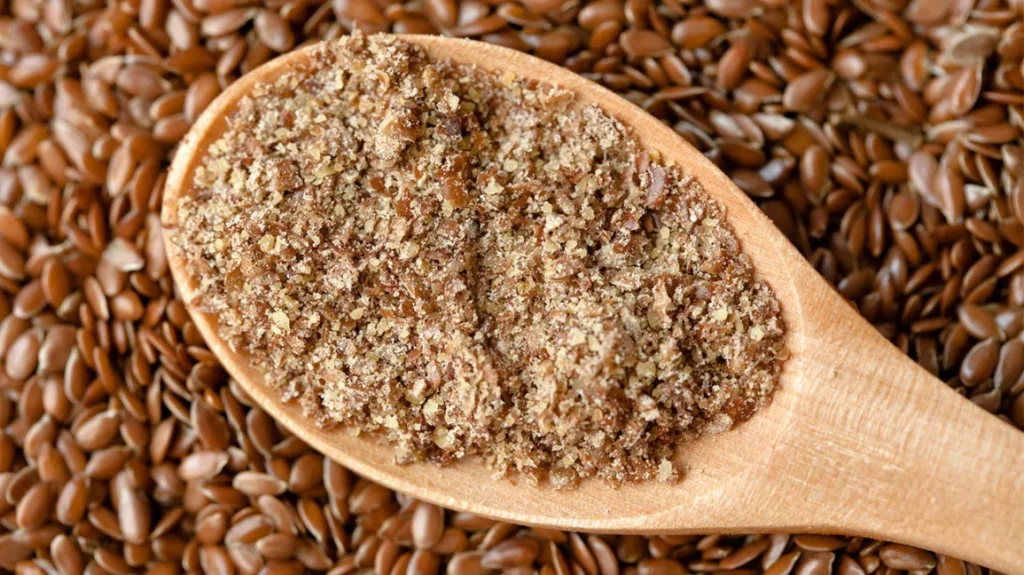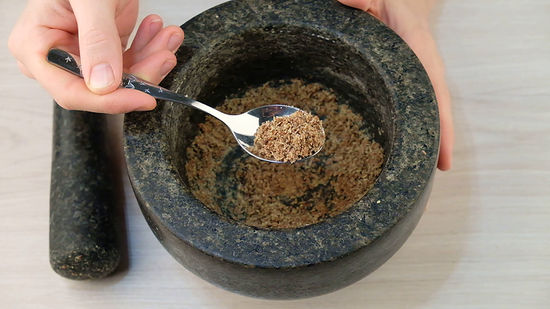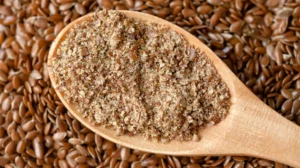
The Properties of Flaxseeds and Unsaturated Fatty Acids
Flaxseeds are one of the most powerful and beneficial foods for health, rich in essential nutrients and healing properties. Among their most valuable components are unsaturated fatty acids, which are essential for the well-being of our body.
1. Source of Omega-3
Flaxseeds are particularly known for their high content of alpha-linolenic acid (ALA), an essential fatty acid that belongs to the Omega-3 group. Omega-3s are “good” fats that our body cannot produce on its own, so they must be obtained through our diet.
The benefits of Omega-3 include:
- Heart health: Omega-3s reduce inflammation, lower LDL cholesterol levels (the so-called “bad” cholesterol), and improve blood pressure, thus protecting the cardiovascular system.
- Brain function: These fatty acids support brain development and function, improving memory and reducing the risk of neurodegenerative diseases such as Alzheimer’s.
- Anti-inflammatory action: Omega-3s help reduce chronic inflammation, which can be the root of numerous diseases, including arthritis and autoimmune disorders.
2. High content of lignans and fiber
Flaxseeds also contain lignans, plant compounds with antioxidant properties that may have positive effects against cancer, particularly breast and prostate cancer. The soluble and insoluble fiber in flaxseeds is essential for:
- Regulating the digestive system: Fiber aids in bowel regularity and can help prevent constipation.
- Maintaining blood sugar levels: Fiber helps slow the absorption of carbohydrates, contributing to stabilizing blood sugar levels.
3. Unsaturated Fatty Acids and Skin Health
The unsaturated fatty acids found in flaxseeds, particularly Omega-3s, promote skin health. These fats:
- Hydrate the skin: They improve the skin’s elasticity and softness, preventing dryness and flakiness.
- Antioxidant action: Omega-3s help reduce damage caused by free radicals, protecting the skin from premature aging.
4. Benefits for the Hormonal System
Flaxseeds have a positive impact on hormonal balance, especially in women. The lignans in flaxseeds have a phytoestrogenic effect, meaning they mimic estrogen in the body and can help balance hormones during menopause, alleviating symptoms like hot flashes and mood swings.
How to Consume Flaxseeds to Maximize Benefits
The best way to consume flaxseeds is to grind them before eating, as the outer shell is too tough for the digestive system to break down properly. However, it’s important to note that the heat generated during grinding can destroy the unsaturated fatty acids, especially Omega-3s. If using a blender or coffee grinder, it’s best to pulse the seeds briefly to avoid overheating.
A gentler alternative is to crush the flaxseeds using a mortar. This manual method helps preserve the unsaturated fatty acids by avoiding heat.
Alternatively, you can soak the flaxseeds in cold water overnight. This process makes them easier to digest and helps release nutrients without damaging the Omega-3s. After soaking, the seeds can be added to smoothies, yogurt, or salads, keeping all their beneficial properties intact.
Effect of Heat on Fatty Acids
The unsaturated fatty acids in flaxseeds, particularly Omega-3s, are very sensitive to heat. When exposed to high temperatures, such as during cooking or frying, these fats break down and lose much of their beneficial properties.
For this reason, it’s best to avoid exposing flaxseeds to high heat. To maximize benefits, it’s better to add flaxseeds raw to already prepared dishes.
Choosing the Best Flaxseed Oil
When selecting flaxseed oil, it’s crucial to choose a high-quality product to maximize its health benefits. Here’s what to look for:
1. Cold-Pressed Flaxseed Oil
The best flaxseed oil is cold-pressed, which means it is extracted from the seeds without using heat. This method preserves the delicate fatty acids, particularly Omega-3s, and ensures that the oil retains its full nutritional profile.
- Cold-pressing is a process where the seeds are mechanically pressed to extract the oil at a low temperature. This helps prevent the degradation of sensitive compounds like Omega-3 fatty acids, which can be destroyed by heat. Cold-pressed flaxseed oil is typically more nutrient-dense and has a higher quality compared to oil extracted using heat or chemicals.
2. Check for Purity
Ensure the oil is 100% pure flaxseed oil without any additives or preservatives. Look for labels indicating that the oil is organic and unrefined. This ensures that the oil is free from pesticides and retains its natural properties.
3. Packaging
Opt for flaxseed oil that comes in dark glass bottles or opaque containers. This packaging helps protect the oil from light, which can cause oxidation and spoilage. Avoid buying oil in clear plastic bottles, as they are more susceptible to light damage.
4. Freshness
Flaxseed oil is highly perishable. Check the expiration date and make sure the oil is fresh. Fresh flaxseed oil will have a mild, nutty flavor. If the oil smells rancid or off, it has likely gone bad and should be discarded.
Storage and Handling
To maintain the quality of flaxseed oil and extend its shelf life:
1. Refrigeration
Store flaxseed oil in the refrigerator after opening. The cold temperature helps slow down the oxidation process and preserves the oil’s beneficial properties. Flaxseed oil can become rancid quickly if left at room temperature or exposed to heat and light.
2. Avoid Heat and Light
Keep the oil away from direct sunlight and heat sources. Store it in a cool, dark place if you cannot refrigerate it. Proper storage helps prevent the breakdown of Omega-3 fatty acids and maintains the oil’s effectiveness.
3. Use Within a Few Months
Even when refrigerated, flaxseed oil should be used within a few months of opening to ensure optimal freshness and nutritional value. Regularly check the oil for any signs of spoilage, such as an off smell or taste.
Recommended Daily Intake of Flaxseeds
The recommended daily intake of flaxseeds is about 1 to 2 tablespoons (10-20 grams) per day. This amount provides a sufficient dose of Omega-3 fatty acids, lignans, and fiber without overloading the body with calories.
Start with smaller amounts if you’re new to consuming flaxseeds, as the high fiber content may take time for your digestive system to adjust to.
Conclusion
Thanks to their rich content of unsaturated fatty acids, fiber, lignans, and other essential nutrients, flaxseeds offer a wide range of health benefits. To make the most of the Omega-3 and other nutrients, the best method is to gently grind the seeds or soak them in cold water overnight. Avoiding exposure to heat helps preserve the beneficial properties of these valuable seeds.
Incorporating 1-2 tablespoons of flaxseeds into your daily diet can support heart health, improve digestion, and promote overall wellness.


